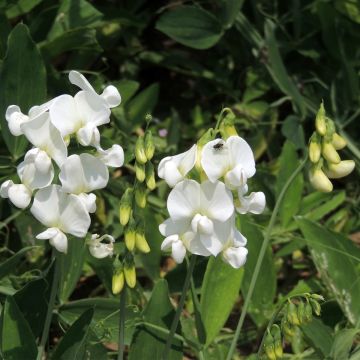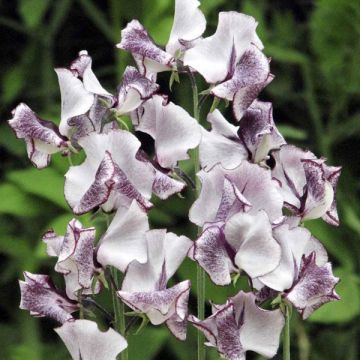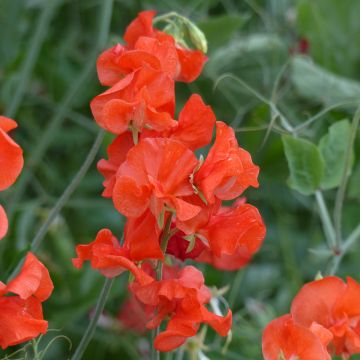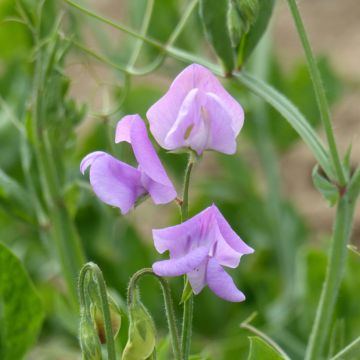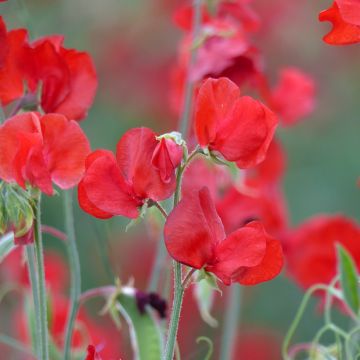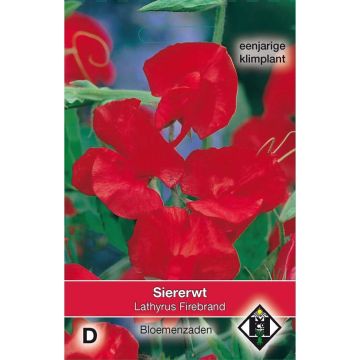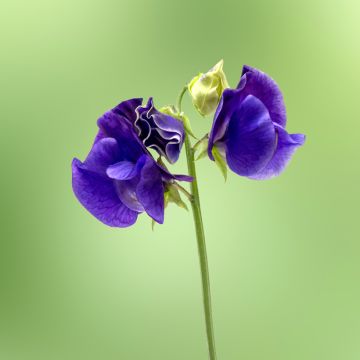Shipping country and language
Your country of residence may be:
Your country of residence is:
For a better user experience on our website, you can select:
Your shipping country:
-
Andorra
-
Austria
-
Belgium
-
Bulgaria
-
Canada
-
Chile
-
Croatia
-
Cyprus
-
Czechia
-
Denmark
-
Estonia
-
Finland
-
France
-
Germany
-
Greece
-
Hungary
-
Iceland
-
Ireland
-
Italy
-
Latvia
-
Lithuania
-
Luxembourg
-
Malta
-
Monaco
-
Netherlands
-
Poland
-
Portugal
-
Romania
-
Slovakia
-
Slovenia
-
Spain
-
Sweden
-
Switzerland
-
United Kingdom
We only deliver seed and bulb products to your country. If you add other products to your basket, they cannot be shipped.
Language:
-
French
-
German
-
Spanish
-
English
-
Italian
My Account
Hello
My wish lists
Log in / Register
Existing customer?
New customer?
Create an account to track your orders, access our customer service and, if you wish, make the most of our upcoming offers.
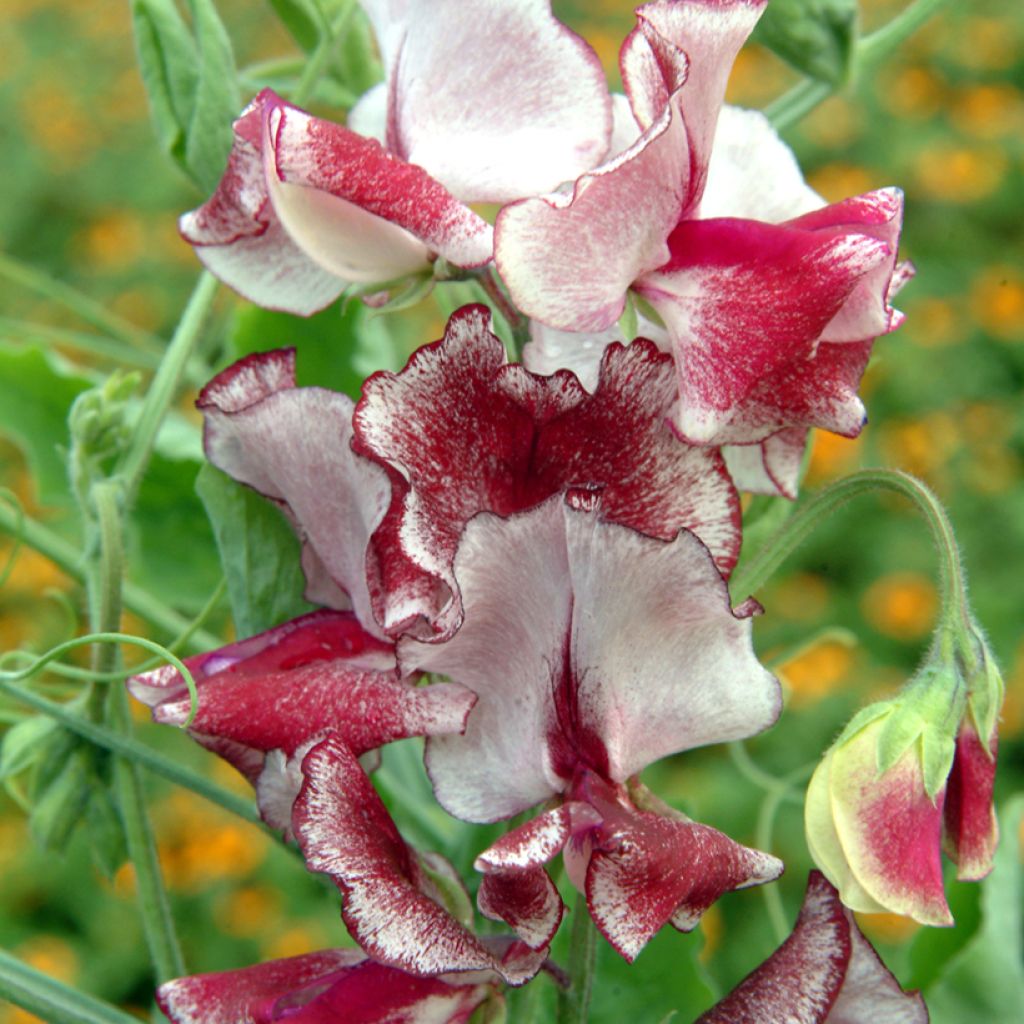

Lathyrus odoratus Spencer Mars - Sweet Pea Seeds
Lathyrus odoratus Spencer Mars - Sweet Pea Seeds
Lathyrus odoratus Spencer Mars
Sweet Pea, Vetch, Vetchling
Why not try an alternative variety in stock?
View all →Order in the next for dispatch today!
Dispatch by letter from €3.90.
Delivery charge from €5.90 Oversize package delivery charge from €6.90.
More information
This item is not available in your country.
Schedule delivery date,
and select date in basket
This plant carries a 6 months recovery warranty
More information
We guarantee the quality of our plants for a full growing cycle, and will replace at our expense any plant that fails to recover under normal climatic and planting conditions.
Seed-only orders are dispatched by sealed envelope. The delivery charge for seed-only orders is €3.90.
Does this plant fit my garden?
Set up your Plantfit profile →
Description
The Lathyrus odoratus Spencer 'Mars' is a variety of Sweet Pea of large size from the Spencer series, a series known for its powerful fragrance, floriferousness, and vigour. 'Mars' offers large original bicolour flowers. On a white background, they are speckled and finely edged with scarlet red. Delightfully scented and carried by long sturdy stems, they are ideal for bouquets. It is an annual, climbing or creeping, plant that quickly colonises a large area. It is easily sown and grown in the sun, in fertile and moist soil.
The Lathyrus odoratus Spencer 'Mars' is an annual herbaceous plant of the Fabaceae family, whose ancestors originate from southeastern Italy and Sicily. Thanks to its tendrils, it can climb or crawl up to 2.50 to 3 m in height and 40 cm in width in a few months. It is adorned with large undulating flowers. The leaves are paired on quadrangular stems, with stipules at the base and extended into tendrils. Their colour is a light green, more or less greyish or bluish. Flowering occurs from June-July to August-September, depending on the sowing date. The papilionaceous flowers are large to very large, clustered in axillary clusters. They consist of 5 petals, more or less frizzled, with the uppermost, also the largest, forming a banner, while the others have an intermediate shape between lip and tube. They release a powerful, yet delicate, scent, with a sweet floral aroma with hints of honeyed and musky tones. The fruit is a flat pod that twists as it expels its seeds at a distance. It is essential to remove faded flowers, as seed production immediately stops flowering. Sweet peas root deeply in the soil to draw water and nutrients. They enjoy warmth, as well as rich, loose, and moist soils.
The Lathyrus odoratus Spencer 'Mars' is an attractive variety, with a gentle and unique character. As annual plants, sweet peas bravely cling their tendrils to numerous supports that they invade in a season, and their charming flowering is essential in the garden. Plant them at the foot of a wire fence or a garden shelter. On the ground, in a variety mix, they form beautiful colourful carpets. They are equally charming in summer beds, using neighbouring plants or bushes as support. By regularly removing the pods that form after the flowers, they generously bloom all summer. In a cottage garden or vegetable patch, where they appreciate fertile and well-watered soil, they accompany columbines, hollyhocks, or foxgloves. They make splendid bouquets. They are majestic in a large hanging basket, cascading into romantic garlands. Mix 'Mars' with white, red, and pink flowers for a splendid colour palette.
Report an error about the product description
Flowering
Foliage
Plant habit
Botanical data
Lathyrus
odoratus
Spencer Mars
Fabaceae
Sweet Pea, Vetch, Vetchling
Cultivar or hybrid
Other Sweet Pea seeds
Planting and care
Before sowing them, let the seeds soak in a bowl of water for 6 hours. This will improve the germination speed.
Sow the Sweet Pea Spencer Mars directly in place at the base of a trellis in March-April, in groups of 2 or 3 seeds at a depth of 2.5 cm. Leave a minimum distance of 30 cm between two groups.
When the seedlings reach the stage of the second pair of leaves, cut the tip of each stem to encourage branching.
Regular watering, but not in excess, will accelerate its growth. A sunny location, a supply of fertiliser for flowering plants, and the removal of faded flowers will promote abundant flowering from June to August.
Beware of snails and slugs that love to devour young plants.
Sowing period
Intended location
This item has not been reviewed yet - be the first to leave a review about it.
Flower seeds
Haven't found what you were looking for?
Hardiness is the lowest winter temperature a plant can endure without suffering serious damage or even dying. However, hardiness is affected by location (a sheltered area, such as a patio), protection (winter cover) and soil type (hardiness is improved by well-drained soil).

Photo Sharing Terms & Conditions
In order to encourage gardeners to interact and share their experiences, Promesse de fleurs offers various media enabling content to be uploaded onto its Site - in particular via the ‘Photo sharing’ module.
The User agrees to refrain from:
- Posting any content that is illegal, prejudicial, insulting, racist, inciteful to hatred, revisionist, contrary to public decency, that infringes on privacy or on the privacy rights of third parties, in particular the publicity rights of persons and goods, intellectual property rights, or the right to privacy.
- Submitting content on behalf of a third party;
- Impersonate the identity of a third party and/or publish any personal information about a third party;
In general, the User undertakes to refrain from any unethical behaviour.
All Content (in particular text, comments, files, images, photos, videos, creative works, etc.), which may be subject to property or intellectual property rights, image or other private rights, shall remain the property of the User, subject to the limited rights granted by the terms of the licence granted by Promesse de fleurs as stated below. Users are at liberty to publish or not to publish such Content on the Site, notably via the ‘Photo Sharing’ facility, and accept that this Content shall be made public and freely accessible, notably on the Internet.
Users further acknowledge, undertake to have ,and guarantee that they hold all necessary rights and permissions to publish such material on the Site, in particular with regard to the legislation in force pertaining to any privacy, property, intellectual property, image, or contractual rights, or rights of any other nature. By publishing such Content on the Site, Users acknowledge accepting full liability as publishers of the Content within the meaning of the law, and grant Promesse de fleurs, free of charge, an inclusive, worldwide licence for the said Content for the entire duration of its publication, including all reproduction, representation, up/downloading, displaying, performing, transmission, and storage rights.
Users also grant permission for their name to be linked to the Content and accept that this link may not always be made available.
By engaging in posting material, Users consent to their Content becoming automatically accessible on the Internet, in particular on other sites and/or blogs and/or web pages of the Promesse de fleurs site, including in particular social pages and the Promesse de fleurs catalogue.
Users may secure the removal of entrusted content free of charge by issuing a simple request via our contact form.
The flowering period indicated on our website applies to countries and regions located in USDA zone 8 (France, the United Kingdom, Ireland, the Netherlands, etc.)
It will vary according to where you live:
- In zones 9 to 10 (Italy, Spain, Greece, etc.), flowering will occur about 2 to 4 weeks earlier.
- In zones 6 to 7 (Germany, Poland, Slovenia, and lower mountainous regions), flowering will be delayed by 2 to 3 weeks.
- In zone 5 (Central Europe, Scandinavia), blooming will be delayed by 3 to 5 weeks.
In temperate climates, pruning of spring-flowering shrubs (forsythia, spireas, etc.) should be done just after flowering.
Pruning of summer-flowering shrubs (Indian Lilac, Perovskia, etc.) can be done in winter or spring.
In cold regions as well as with frost-sensitive plants, avoid pruning too early when severe frosts may still occur.
The planting period indicated on our website applies to countries and regions located in USDA zone 8 (France, United Kingdom, Ireland, Netherlands).
It will vary according to where you live:
- In Mediterranean zones (Marseille, Madrid, Milan, etc.), autumn and winter are the best planting periods.
- In continental zones (Strasbourg, Munich, Vienna, etc.), delay planting by 2 to 3 weeks in spring and bring it forward by 2 to 4 weeks in autumn.
- In mountainous regions (the Alps, Pyrenees, Carpathians, etc.), it is best to plant in late spring (May-June) or late summer (August-September).
The harvesting period indicated on our website applies to countries and regions in USDA zone 8 (France, England, Ireland, the Netherlands).
In colder areas (Scandinavia, Poland, Austria...) fruit and vegetable harvests are likely to be delayed by 3-4 weeks.
In warmer areas (Italy, Spain, Greece, etc.), harvesting will probably take place earlier, depending on weather conditions.
The sowing periods indicated on our website apply to countries and regions within USDA Zone 8 (France, UK, Ireland, Netherlands).
In colder areas (Scandinavia, Poland, Austria...), delay any outdoor sowing by 3-4 weeks, or sow under glass.
In warmer climes (Italy, Spain, Greece, etc.), bring outdoor sowing forward by a few weeks.

